Originally posted by Crumpp
You have a request from supply but nothing from the Operational HQ ordering the use.
Again, the document that dictates the ALL the types of fuel authorized in USAAF aircraft by type does not list 100/150 grade as authorized.
T.O. 02-1-38 Specified and Alternate Grade Fuel for Aircraft-Engine Combinations (2 Oct 1944, rev. 10 Feb 1945, rev. 20 May 1945)
A Technical Order would have most certainly been issued to cover the fuel usage along with instructions on the modifications to the aircraft.
All the best,
Crumpp
While the 150 octane fuel may not appear on the approved list in that technical order, we can see from evidence that the highest levels of command in the ETO and USAAF approved of its use. The engines were tested with the fuel at higher boost levels and it was found to be satisfactory. The fuel was tested operationally, and afterwards the 8th AF requested that it be supplied to it's fighter groups. Men who flew and worked on airplanes for the 8th AF's fighter groups specifically mention modifying the aircraft, and using the fuel and higher power settings operationally. We have photos of aircraft remarked for use with 150 octane fuel. And we have documents from the USAAF supply command in europe stating that the 8th used 150 octane, and was modifying every replacement fighter they recieved to use that grade of fuel.
From Mike and Neil's web site:
Here we have a memo from Eisenhower, Supreme Commander in theater specifically requesting the components to produce 150 octane fuel in the UK for the express purpose of improving fighter performance.
Here we have Hap Arnolds reply, stating that their tests concur with the 8th's results and suggesting they proceed with caution with the Allison engines.
Here we have the test results from material command showing that the V-1650 (P-51's merlin) will operate at the higher rating with 150 octane fuel. You can also find these same docs for the Allison and Pratt & Whitney engines of the P-38 and P-47.
Here we have test results from Wright Patterson with the ultimate recommendation:
A. It is recommended that the war emergency rating of the V-1650-7 engine as installed on the P-51B airplane and using 44-1 fuel be increased to 75 in. Hg. manifild pressure and 3000 RPM.
Once again we can find the same recommendations for the P-38 and P-47.
These tests, along with
the operational squadron tests obviously sold 8th fighter command, as we can see that they requested the fuel be
delivered to the 8th FC stations .
With regard to modifications to the aircraft, note that it says:
3. The modifications necessary on the planes, to obtain the maximum efficiency from the fuel, can be carried out on the airfields during normal servicing of the planes between missions without taking them out of service. It is understood no special equipment or parts are required for the present change over, but the PPF project equipment should come forward from the U.S.A. as it may be required later.
We've aleady talked about supply, so I won't go into that except to point out
this document. Note paragraph c.
During the week ending 18 June 1944, 100 octane gasoline in our storage tanks was replaced by the 150 octane grade.
Note that no P-51s took part in the testing by 3 squadrons in spring and early summer of 44, and the PEP testing in early 45 was carryed out by the 355th FG. The 361st, and the other groups noted below would all be using it operationally.
On
this page at the bottom we find statements by pilots and groundcrew of the 357th and 78th Fighter groups describing modifying aircraft for 150 octane, using 150 octane oprationally, and using the higher WEP settings operationally.
On top of that we have photos of Mustangs in operational fighter groups remarked for use with 150 octane fuel.
From Mike and Neil's site:
 78th Fighter Group
78th Fighter GroupAnd some I found on my own:
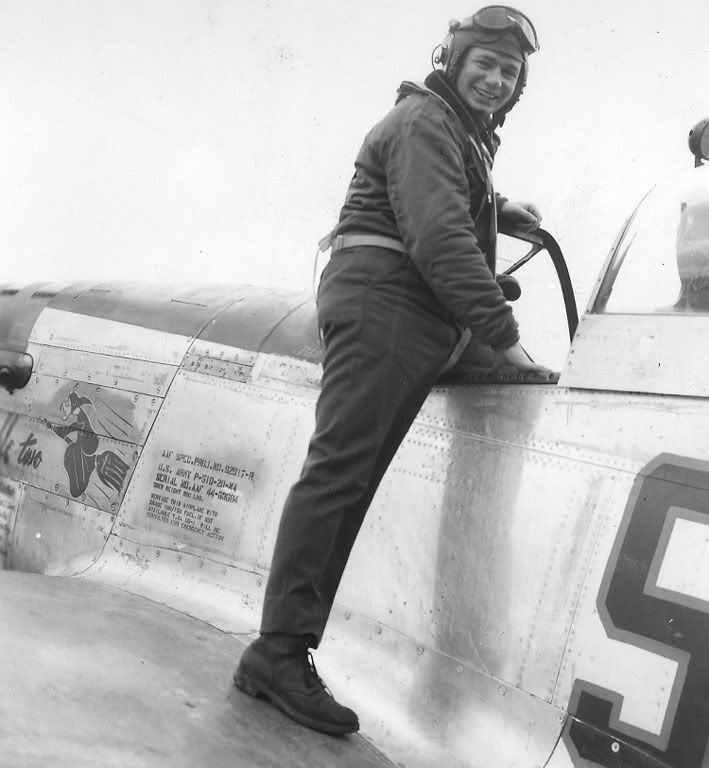 353rd Fighter Group
353rd Fighter Group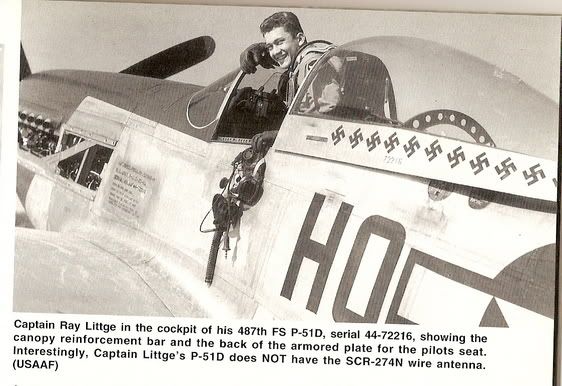
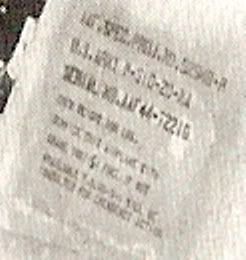 352nd Fighter Group
352nd Fighter Group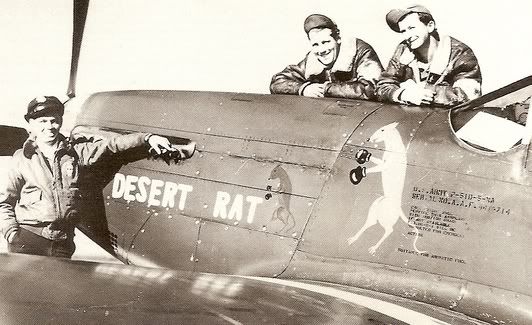
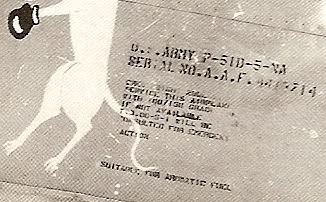 357th Fighter Group
357th Fighter GroupFinally in the memo from 9th AF that I linked in a previous post it states:
Eighth Air Force decided to use 100/150 fuel in their fighters ...
and
All of the replacement fighter aircraft being processed by Base Air Depot Area for the Eighth Air Force, are being equipped with the necessary modifications for use of grade 150 fuel.
In the preceeding posts we debated supply, and it's clear that there was supply. Here we can see that there was approval for use of the 150 octane fuel at the highest levels of command, that it was tested sucessfully, and that it was used operationally.
To argue otherwise based on the 150 octane fuel not appearing on the "approved" list in some technical order, is much like talking to a person standing before you and arguing they don't exist because you don't have a copy of their birth certificate.